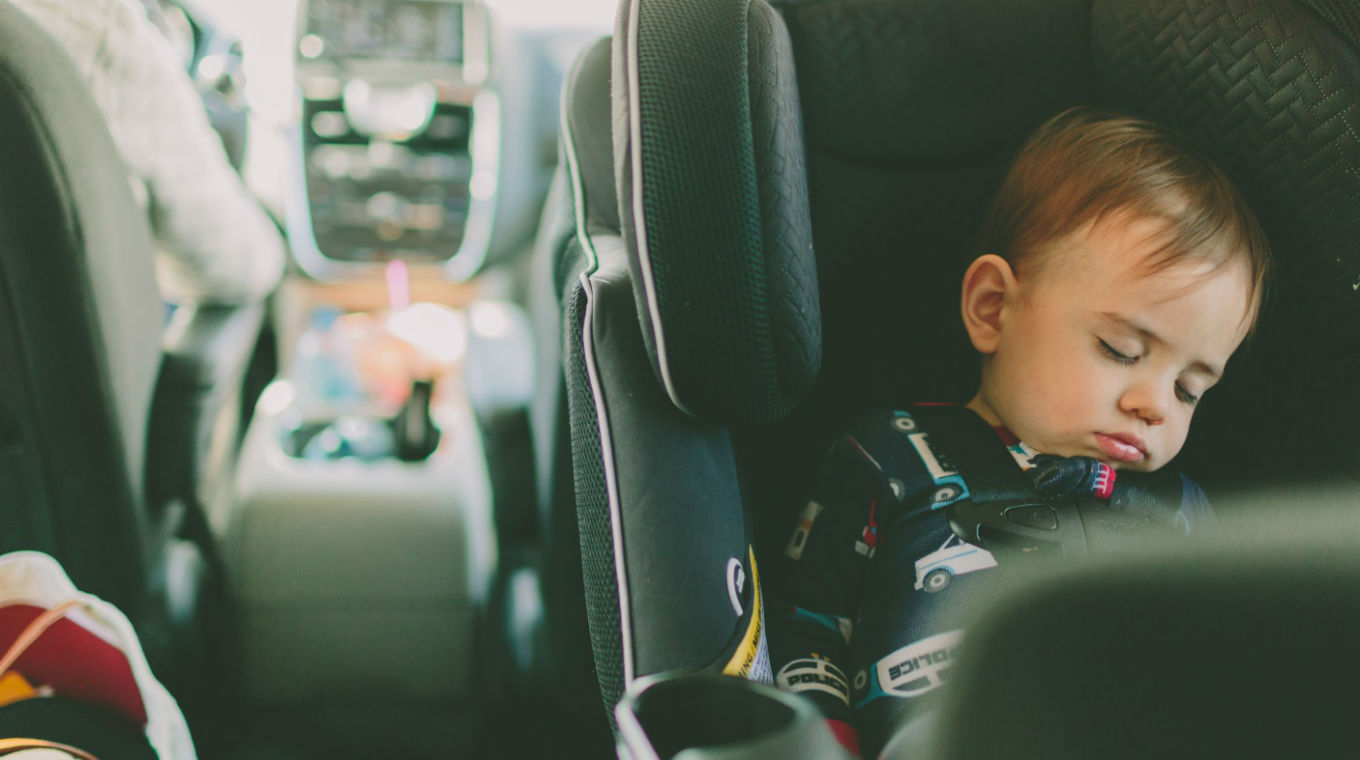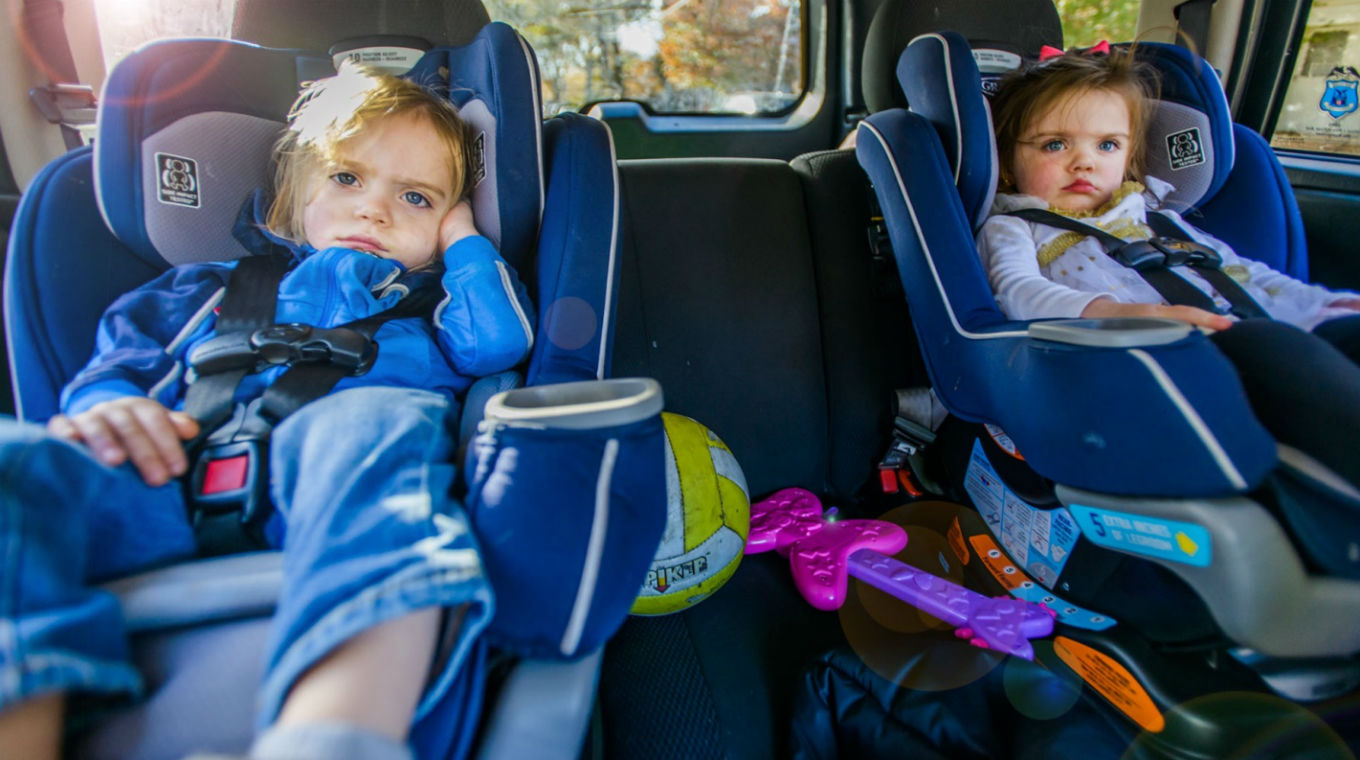
In this article
Car seats can be a daunting subject for parents, especially when it comes time to transition from one size seat to another. As parents, we’re inundated with messaging about the many do's and don’ts of car-seat selection and installation. Not to fear, your convertible car seat guide is here! We’re breaking it down, step by step, to help you pass this milestone with flying colors.
How do I know if my baby has outgrown his infant car seat?
As a general rule of thumb, your baby has outgrown his infant car seat when either of the following circumstances happens:
- He reaches the weight limit of the infant car seat, which is usually around 30 to 35 pounds.
- The top of his head is less than an inch from the top of the seat when buckled in.
According to Wirecutter, most children outgrow their seat’s height limit before they outgrow the weight limit.
Mom of two, Michelle K., agrees. “My son maxed out on the length of his infant car seat first.”
Once that happens, parents typically switch to a convertible car seat anytime between 9 months and 2 years, depending on their child’s size.
For mom of four, Meagan W., the transition happened earlier than she expected. “I switched all of my babies out of their infant car seats around 8 months because they were so long and too heavy for me to carry around. I have big babies!”
Consumer Reports recommends that parents transition babies to a rear-facing convertible car seat by their first birthday because of a potential safety benefit.
“We found that in more than half of the infant seats we tested, the head of a 12-month-old child dummy came into contact with the simulated front seatback. That type of impact could result in injury to a child,” writes Emily A. Thomas in an article for Consumer Reports. “By contrast, in almost all the rear-facing convertible seats, the head of the 12-month-old dummy avoided contact.”
So, despite the obvious convenience of infant car seats, convertible car seats may have a safety advantage past the 12-month mark.
What is a convertible car seat?

Also referred to as a toddler seat, a convertible car seat is designed to face backward or forward. Convertible car seats are bulkier than infant car seats, and are designed to stay in the car. They don’t have carrying handles or separate bases, either. Many convertible car sears also have rear-facing weight limits up to 40-50 pounds, so you can keep bigger babies and toddlers rear-facing longer than in rear-facing-only seats. Once your child exceeds the rear-facing limits, the car seat can be converted to forward facing for older children.
Convertible car sears also include a 5-point harness that attaches at the shoulders, hips, and between the legs.
How should I switch to a convertible car seat?

Here are three simple things to keep in mind when transitioning your baby from an infant car seat to a convertible car seat:
1. Size matters: Keep track of your child’s height, weight, and age to help determine the proper seat size for your little one.
2. Do your homework: Find a retailer that will let you test a seat in your car to make sure it’s compatible. Online pricing and free shipping can be tempting, but it’s best to check out car seat models in real life, first.
3. Car 411: Check your vehicle owner’s manual to study up on relevant features, such as belts, seats, and LATCH
How long should my child remain rear-facing in a convertible car seat?

The American Academy of Pediatrics (AAP) updated their rear-facing recommendation in 2018 to state that children should remain in a rear-facing car safety seat as long as possible — at least until they reach the highest weight or height allowed by their seat. Previously, the AAP noted that children should remain rear-facing until at least 2 years of age. Their updated recommendation removes that specific age marker, allowing children to remain rear-facing even longer.
“It’s best to keep your child rear-facing as long as possible,” says Dr. Benjamin Hoffman, chair of the AAP Council on Injury, Violence, and Poison Prevention. “This is still the safest way for children to ride.”
Now that you have all the latest information about switching to a convertible car seat, you’re ready to safely transition your little one to his big-boy seat. Once you find the right seat and learn how to master the 5-point harness, your little love will be sitting pretty and ready to cruise!




